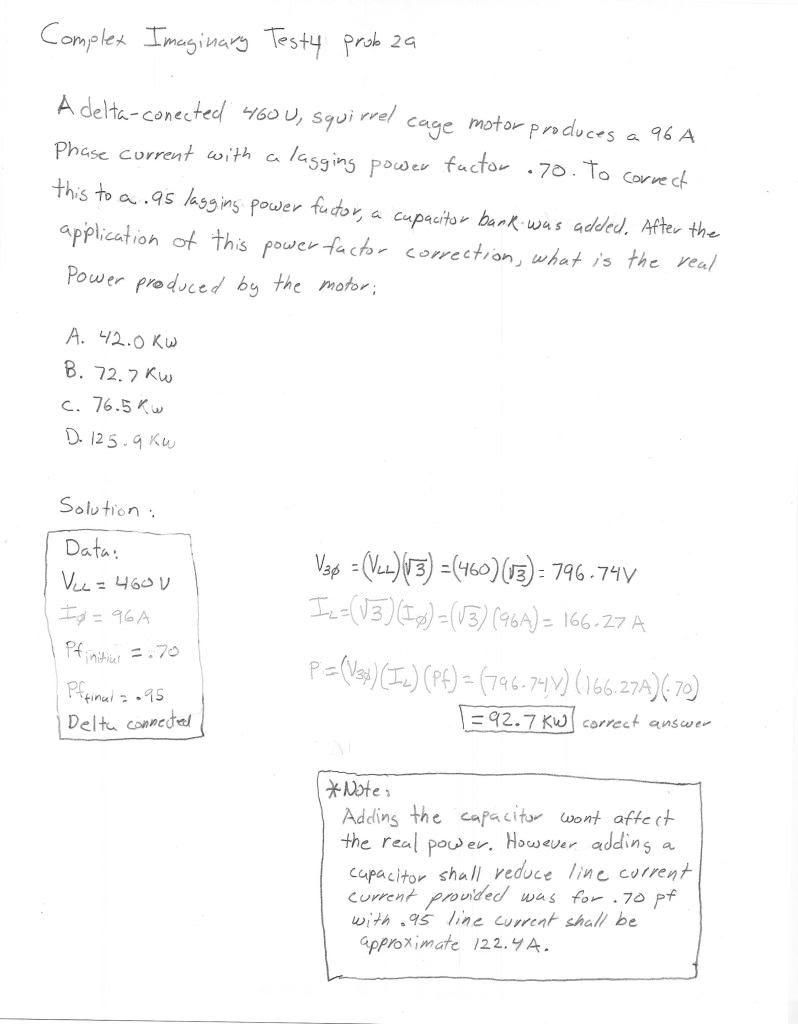Wildsoldier PE
Well-known member
- Joined
- Aug 19, 2010
- Messages
- 290
- Reaction score
- 14
I think complex imaginary have this answer wrong.
At first they have P=(SQ3) (460) (96) (.95) = 72.7 KW
Then an errata goes out on this problem saying.
P = (3) (460) (96) (.95) = 125.9 KW
Now this is how I resolve this problem i assume this motor is a 3-phase motor:

Let me know what you all think!!
At first they have P=(SQ3) (460) (96) (.95) = 72.7 KW
Then an errata goes out on this problem saying.
P = (3) (460) (96) (.95) = 125.9 KW
Now this is how I resolve this problem i assume this motor is a 3-phase motor:

Let me know what you all think!!



